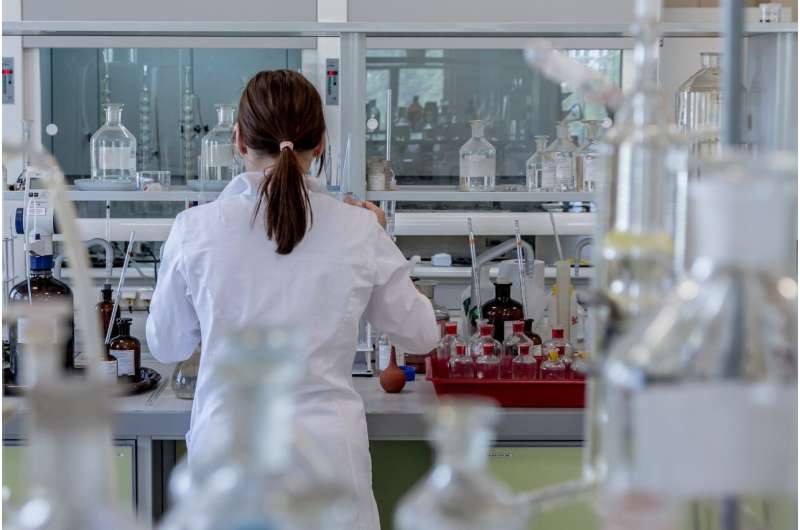This article has been reviewed according to Science X's editorial process and policies. Editors have highlighted the following attributes while ensuring the content's credibility:
fact-checked
peer-reviewed publication
trusted source
proofread
A better route to benzocyclobutenes, sought-after building blocks for drugs

Scripps Research chemists have solved a long-standing problem in the field of pharmaceutical chemistry with a relatively simple and controllable method for making benzocyclobutenes (BCBs)—a class of reactive compounds that are highly valued as building blocks for drug molecules, but have been relatively hard to access.
The new method, described in a paper in Science, uses designer ligand molecules with palladium-atom catalysts to break pairs of adjacent methylene-type C-H bonds in relatively cheap and abundant carboxylic acids. Breaking these bonds enables the making of BCBs with unprecedented ease through a process called a formal [2+2] cycloaddition.
The researchers demonstrated the new method with relatively easy syntheses of several BCBs found in traditional medicines and in experimental and approved drug molecules. The paper, "Regio-controllable [2+2] benzannulation with two adjacent C(sp3)–H bonds," was co-authored by Ji-Min Yang, Yu-Kun Lin, Tao Sheng, Liang Hu, Xin-Pei Cai and Jin-Quan Yu, all of Scripps Research.
"Our new method requires only a saturated aliphatic chain and aryl halides as coupling partners for a formal cycloaddition yielding a four-membered ring," says study senior author Jin-Quan Yu, Ph.D., the Bristol Myers Squibb Endowed Chair in Chemistry and Frank and Bertha Hupp Professor in the Department of Chemistry at Scripps Research. "By contrast, the traditional method for making BCBs requires more steps and yields a mix of products that are hard to separate."
BCBs have a unique core structure consisting of a relatively rigid, strained and reactive ring of four carbon atoms fused to a benzene ring. They are present in some natural medicinal compounds and in the heart-failure drug ivabradine. In general, their propensity for biological activity makes them potentially very useful building blocks for drugs. They are also key ingredients in photosensitive polymers, polymer dielectrics and other advanced materials.
The synthesis of BCBs has been challenging, however. The limitations of the various methods that have been published include an inability to control the order in which individual reactions occur, so that the reaction products include not only the desired product but also unwanted ones. Yu's new method for the first time enables this control—a property called regioselectivity.
Last year, the Yu lab developed a method for the palladium-catalyzed, β- and γ-methylene C-H functionalization of free aliphatic acids, to make structurally diverse γ- and δ-lactones—also highly valued as potential pharmaceutical building blocks. Inspired by that method and using it as a starting point, they pursued a similar approach to surmount the challenge of BCB regioselective synthesis.
For the new method, they employed bidentate amide-pyridone ligands bearing palladium catalysts to activate the C-H bonds of two adjacent methylene units in a carboxylic acid.
"In the presence of a dihaloheteroarene, two C–H bonds and two aryl–halogen bonds are stitched together almost miraculously to form a bicyclic BCB scaffold," Yu says. "Regioselectivity is achieved through the differentiation between the aryl iodide and bromide sites."
The chemists showed that the method can be used with a wide range of cyclic and acyclic aliphatic acids to generate diverse BCBs and hetero-BCBs—a dream come true for many pharmaceutical chemists.
"The ability to make direct use of abundant and structurally varied acyclic and cyclic acids as substrates, without pre-functionalization, substantially expands chemists' access to diverse BCB scaffolds—including heterocyclic BCBs that can be very useful in drug molecules," Yu says.
More information: Ji-Min Yang et al, Regio-controllable [2+2] benzannulation with two adjacent C(sp3)–H bonds, Science (2023). DOI: 10.1126/science.adg5282. www.science.org/doi/10.1126/science.adg5282
Journal information: Science
Provided by The Scripps Research Institute



















